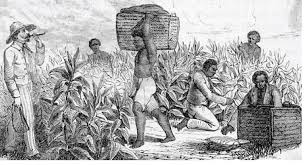Shankari Prasad Singh v. Union of India
The Shankari Prasad (however, now overrules) case has an important place in the constitutional history of India. It was the first case that was initiated against the first amendment which added Article 31A, B, to the Constitution.
In original Constitution, under the rainbow of rights in Article 19, Indian citizens also had the ‘right to property’ which was deleted later by 44th constitutional amendment in 1978. However, after the promulgation of Constitution of India, this article created problems for the Indian government as it was unable to do any agrarian reforms in the existence of Article 31. Government determined to abolish the ‘Zamindari (landholding) system’ which was the cause of concentration of a big amount of property to only some people while a larger part of Indian people was landless.
The judge who wrote this judgment was ‘Patanjali Shastri’, he was also the second Chief Justice of India.
The story
Some petitions were filed against the first constitutional amendment which purports to insert, inter alia, articles 31A and 3lB in the Constitution Of India, it was contended that the present amendment is ultra vires and unconstitutional.
What led to that enactment of this amendment was the fact that the political party then in power, commanding as it did a majority of votes in the several State legislatures as well as in Parliament, carried out certain measures of agrarian reform in Bihar, Uttar Pradesh and Madhya Pradesh by enacting legislation which may compendiously be referred to as Zemindary Abolition Acts.
Certain zemindars, feeling themselves aggrieved, attacked the validity of those Acts in courts of law on the ground that they contravened the fundamental rights conferred on them by Part III of the Constitution.
- The High Court at Patna held that the Act passed in Bihar was unconstitutional while
- the High Courts at Allahabad and Nagpur upheld the validity of the corresponding legislation in Uttar Pradesh and, Madhya Pradesh respectively.
Appeals from those decisions were pending in supreme Court. Petitions filed in supreme Court by some other zemindars seeking the determination of the same question were also pending.
At that stage, the Union Government, with a view to put an end to all those litigations and to remedy what they considered to be certain defects brought to light in the working of the Constitution, brought forward a bill to amend the Constitution, which, after undergoing amendments in various particulars, was passed by the requisite majority as the Constitution (First Amendment) Act, 1951.
Swiftly reacting to this move of the Government, the zemindars brought the petitions under article 32 of the Constitution impugning the Amendment Act itself as unconstitutional and void.
The argument against the validity of the First Amendment was that Art. 13 prohibits enactment of a law infringing or abrogating the Fundamental Rights, that the word ‘law’ in Art. 13 would include any law, even a law amending the Constitution and, therefore, the validity of such a law could be judged and scrutinised with reference to the Fundamental Rights which it could not infringe. Here was thus posed a conflict between Arts. 13 and 368.
Adopting the literal interpretation of the Constitution, the Supreme Court upheld the validity of the First Amendment. The Court rejected the contention and limited the scope of Art. 13 by ruling that the word ‘law’ in Art. 13 would not include within its compass a constitution amending law passed under Art. 368.
The Court stated on this point: “We are of the opinion that is the context of Art. 13 law must be taken to mean rules and regulations made in the exercise of ordinary legislative power and not amendments to the Constitution made in the exercise of constituent power with the result that Art. 13(2) does not affect amendments made under Art. 368”.
Thus, the Court held that the terms of Art. 368 are perfectly general and empower Parliament to amend the Constitution without any exception. The Court insisted that there is a clear demarcation between ordinary law, which is made in exercise of legislative power, and constitutional law, which is made in exercise of constituent power.
However, this case was overruled in Golaknath v. Union of India, 1967 by holding that the Fundamental Rights were non-amendable through the constitutional amending procedure set out in Art. 368.
Reference
Sri Sankari Prasad Singh Deo vs Union Of India; 1951 AIR 458, 1952 SCR 89
